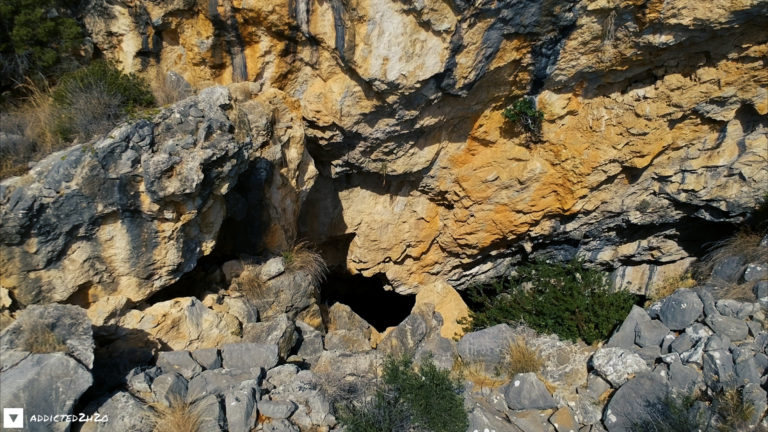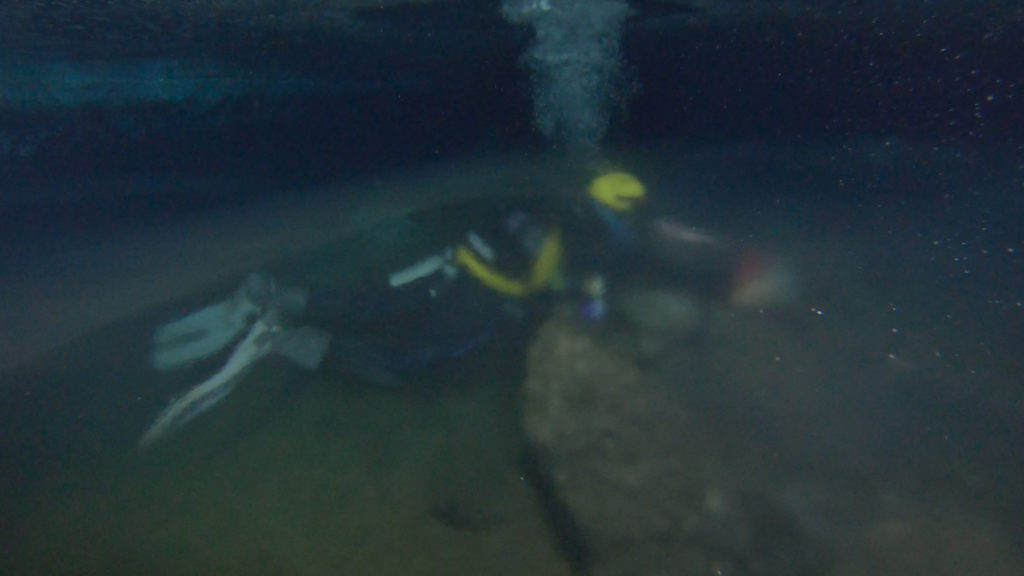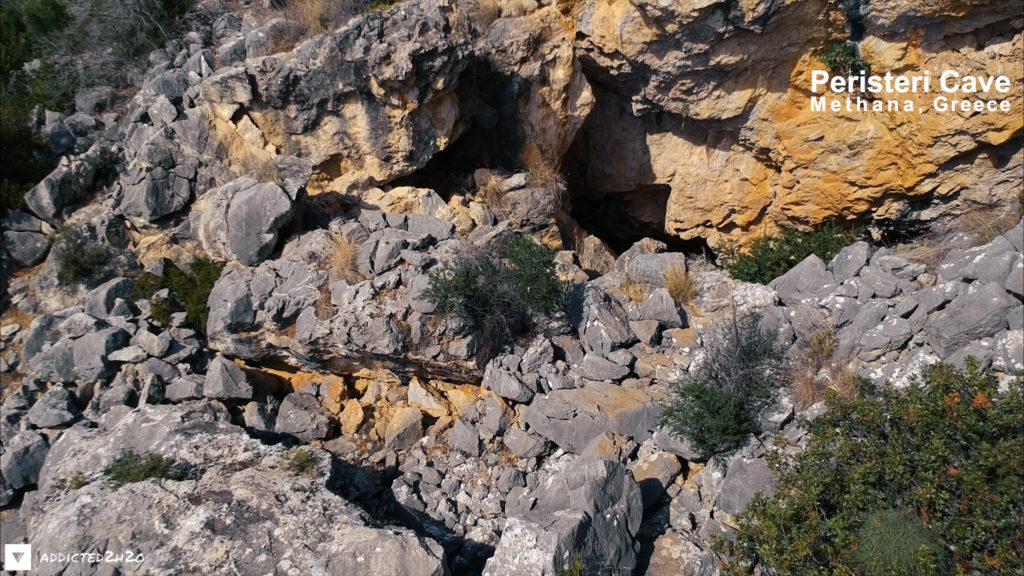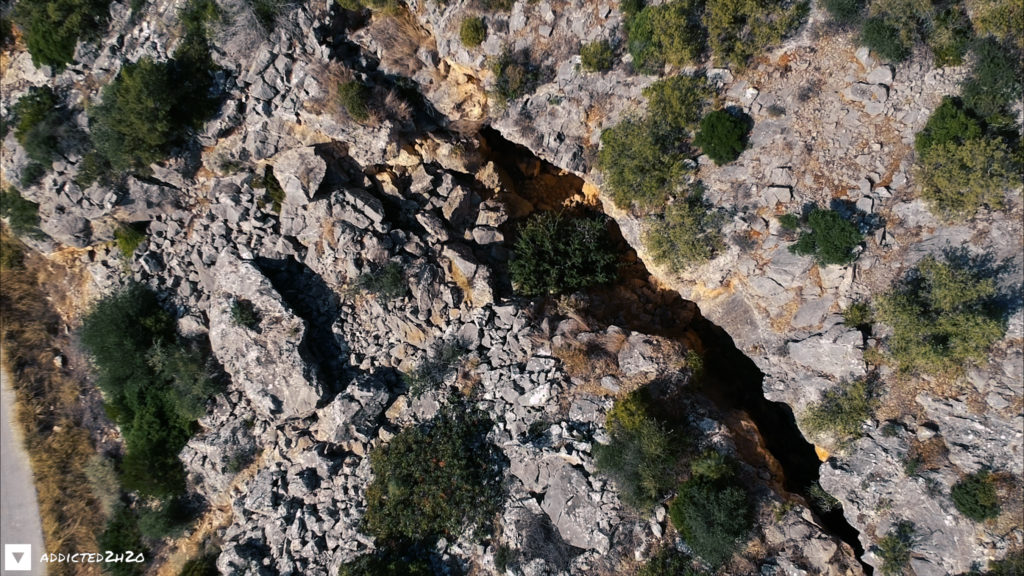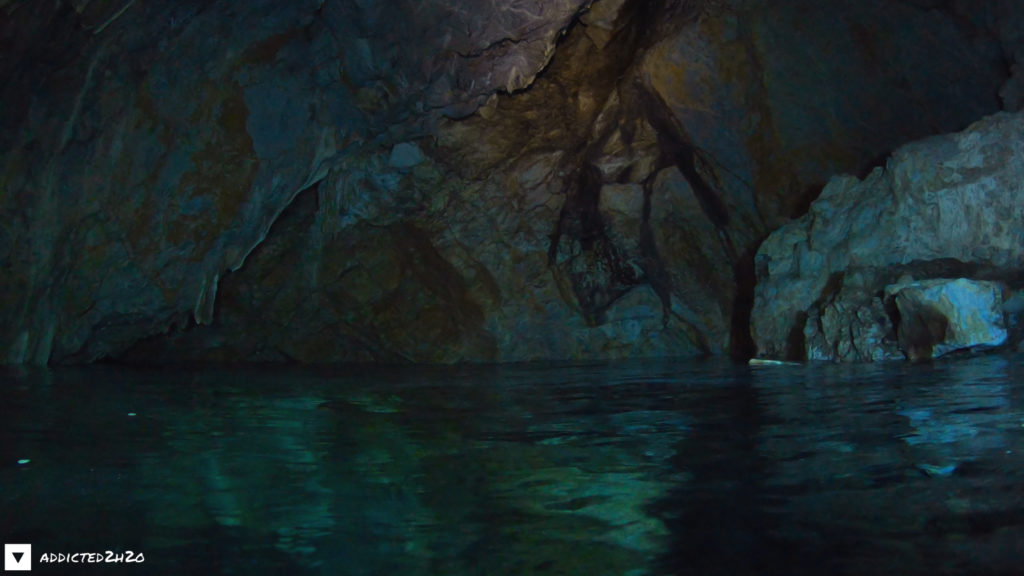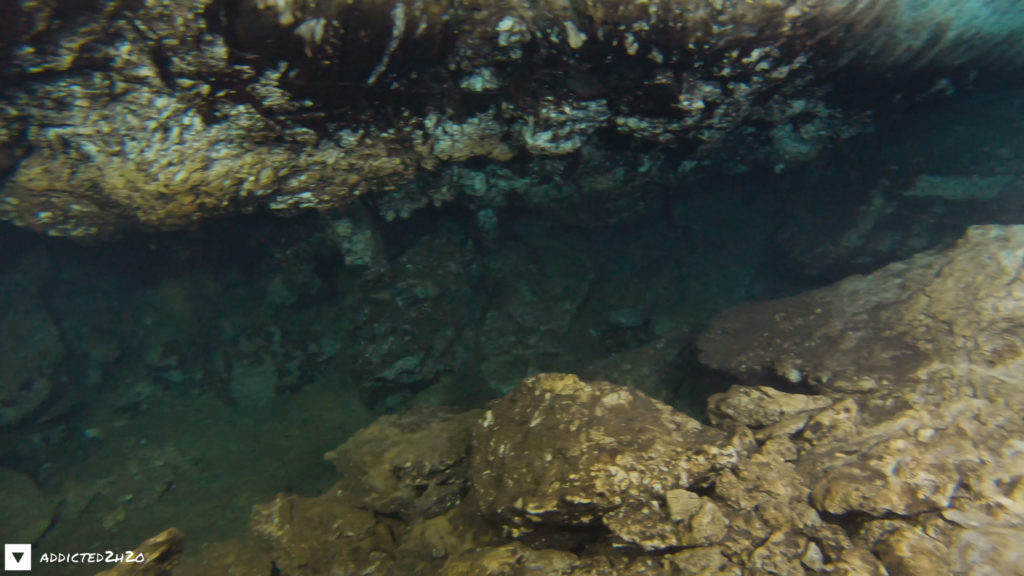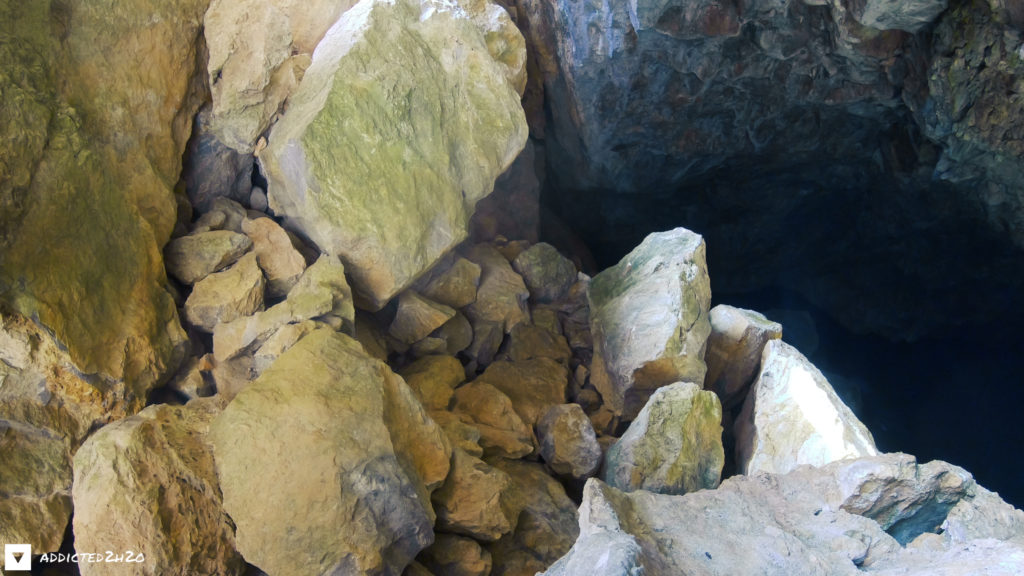Peristeri Cave
Methana
The cave of Peristeri is located on the road that leads from the Strait of Methana to Vathi, at a distance of about 1.9 km from the intersection of the Strait. Immediately after the fish farms, we find on our right a sign that guides us to the cave. The sign was recently placed in 2010 by the Arsinoe association and also warns us about the dangers of approaching the site.
The cave is estimated to be 2.5 million years old and was discovered around 1973 while construction of the main road was taking place. The length of the cave is approximately 250 meters. It consists of three main chambers. The first a lake, the second is full of rocks that have fallen from the roof blocking the underwater passage, while in the third chamber there is water again. The cave is essentially an underground aquifer.
This cave was first explored by speleologist and president at the time of the Hellenic Speleological Society Mrs. Anna Petrohilou in February of 1974. Other sources on the internet refer to four people first entering the cave in 1973 although the official report (with registration number 4325) from the exploration work conducted in 1974 mentions Mr. Evangelos Lazarou who first located and entered the cave in 1972. He descended down the rocks 20 meters and reached the waters edge. He did not mention this to anyone at the time for fear of vandalism to the site, but he did write to the Ephorate of Antiquities in Athens at Monastiraki. After a year and a half of persisting, the Ephorate of Antiquities informed him to contact the Hellenic Speleological Society as being the qualified body to investigate further. He did so by visiting the president Mrs. Petrohilou on the 8th of January in 1974.
The opening of the cave is located up a steep slope of rocks of approximately 30 meters distance from the main road. The width of the opening is 32 meters whilst the height approximately 10 meters. There is a steep slope of large rocks of approximately 20 meters height and 28 meters distance to the waters edge.
The cave consists of 3 main chambers, the first and the third partially submerged in water in some parts whilst fully submerged in others, and the middle section which is covered by large rocks. These were the sections explored fully in 1974 as per the report. No mention of diving is made anywhere in the report concerning the exploration work conducted at this site in 1974. Although we can assume that some form of underwater investigation was carried out. Various group of people and associations have visited the site over the past years and accessed those areas of the cave which can be swam on the surface.
We dived this cave on the 26th of September 2020. Our aim of our visit was initially to capture underwater footage and subsequently determine if there where any other passages or routes leading further into the cave. During our dive we did discover two sections underwater near the entrance in the first chamber (one to the left and one to the right) where the cave continues further. The tunnel to the left seems to be the area where a large quantity of either fresh or sea water is entering the cave thus causing the halocline which is especially noticeable in the first chamber. Additionally in the third chamber there is a small underwater chamber which has several small stalagmites on the cave floor. This area can only be accessed underwater with scuba equipment. Overall it is a beautiful cave despite its partial difficulty in access.
Source
The Peristeri Cave, Megalohorion Methana, speleological report number 4325, Mrs. Anna Petrohilou. Hellenic Speleological Society Bulletin, Volume XII, Issue 5.
Cave Divers:
Stelios Stamatakis
Erikos Kranidiotis
ADDICTED2H2O
Do what you can’t
